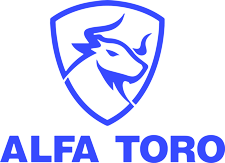What is a Consolidation Candlestick Pattern? With Examples
A consolidation candlestick is identified when a candlestick has closed within the price range of the previous candlestick–this is also known as an “inside bar”. It did not break the previous high or the previous low.

In the example above, you can see the consolidation candlestick (grey) did not break the previous high or low.
Now that you know how to identify a consolidation candlestick, let’s talk about what it means for a stock!
What Does Consolidation Mean For a Stock?
A consolidation candlestick means that the price of a stock has not chosen direction in the market.
The market is indecisive about if the price of the stock is to continue going up or down.
How To Trade a Consolidation Candlestick Pattern
I never enter a trade the consolidation candlestick. I always wait for the next candlestick to see if it picked a direction.
Here’s an example of a trend reversal from bearish to bullish with a consolidation candlestick.

In the example above, you have an engulfing candlestick (red) followed by a consolidation candlestick (grey).
What I want to see right after the consolidation candlestick (grey) is to see if it would continue to the downside or to the upside.
In the example above we had a bullish reversal – my entry would as soon as it picks a trend & breaks the consolidation.
Remember that we need a clear direction (up or down). Entering a trade with no clear direction is just gambling.
The image above, can also be in reverse and it would still follow the same rules.
Another strategy that works is trading the supply & demand zones–by far my favorite strategy to use consolidation sticks.
This is when you find a base candlestick aka consolidation candlestick, followed by a huge direction to the upside or downside.

In the example above, I draw a box when the following requirements above are met. That box becomes the zone. But in the example above it’s a supply zone, because it formed a based followed by a huge red candlestick to the downside.
This can be done to the upside as well–this is called a demand zone.

If you’d like to learn more about Supply & Demand, take a look at this article: “How To Find Supply And Demand Zones: Easy Beginner’s Guide“.
